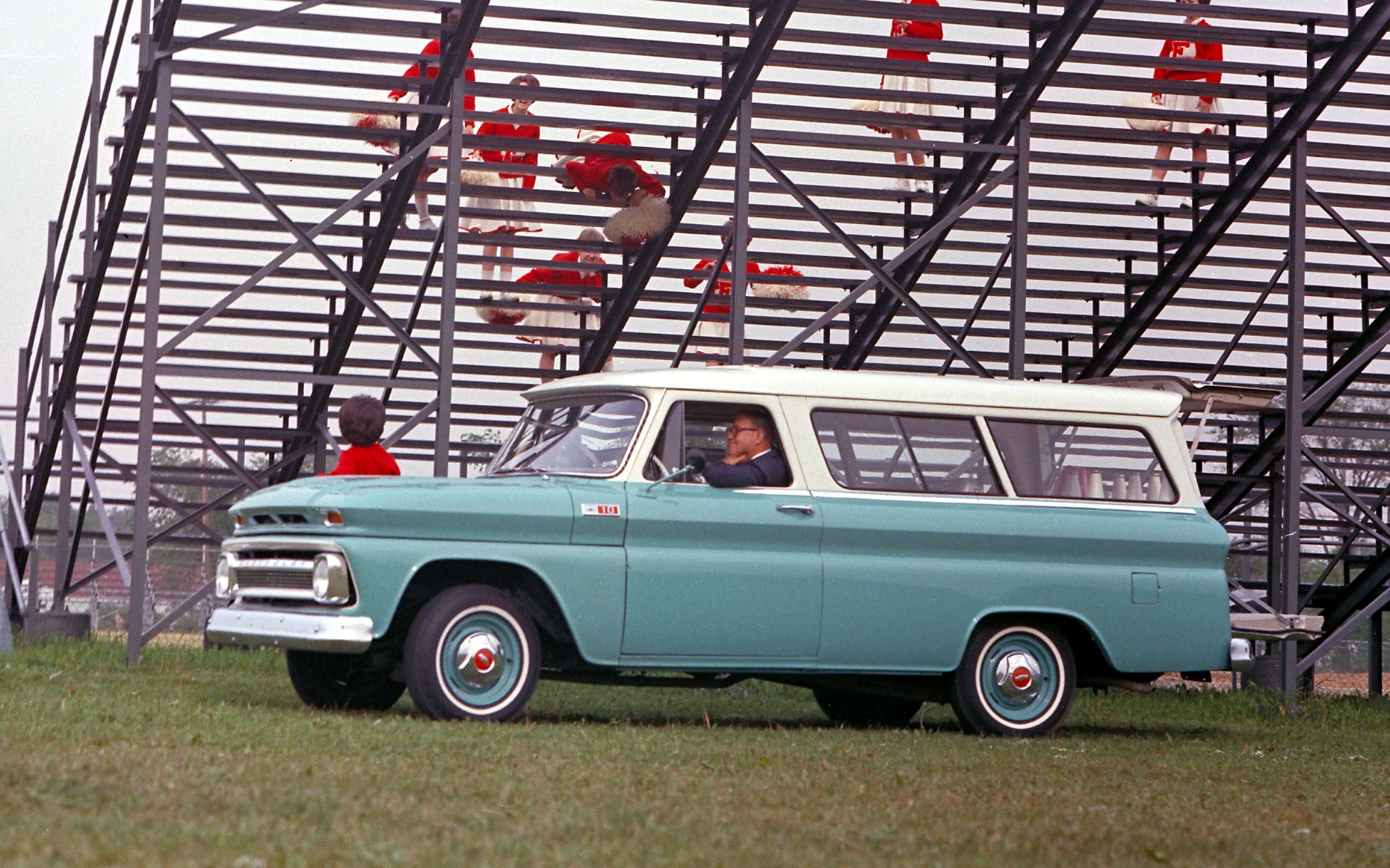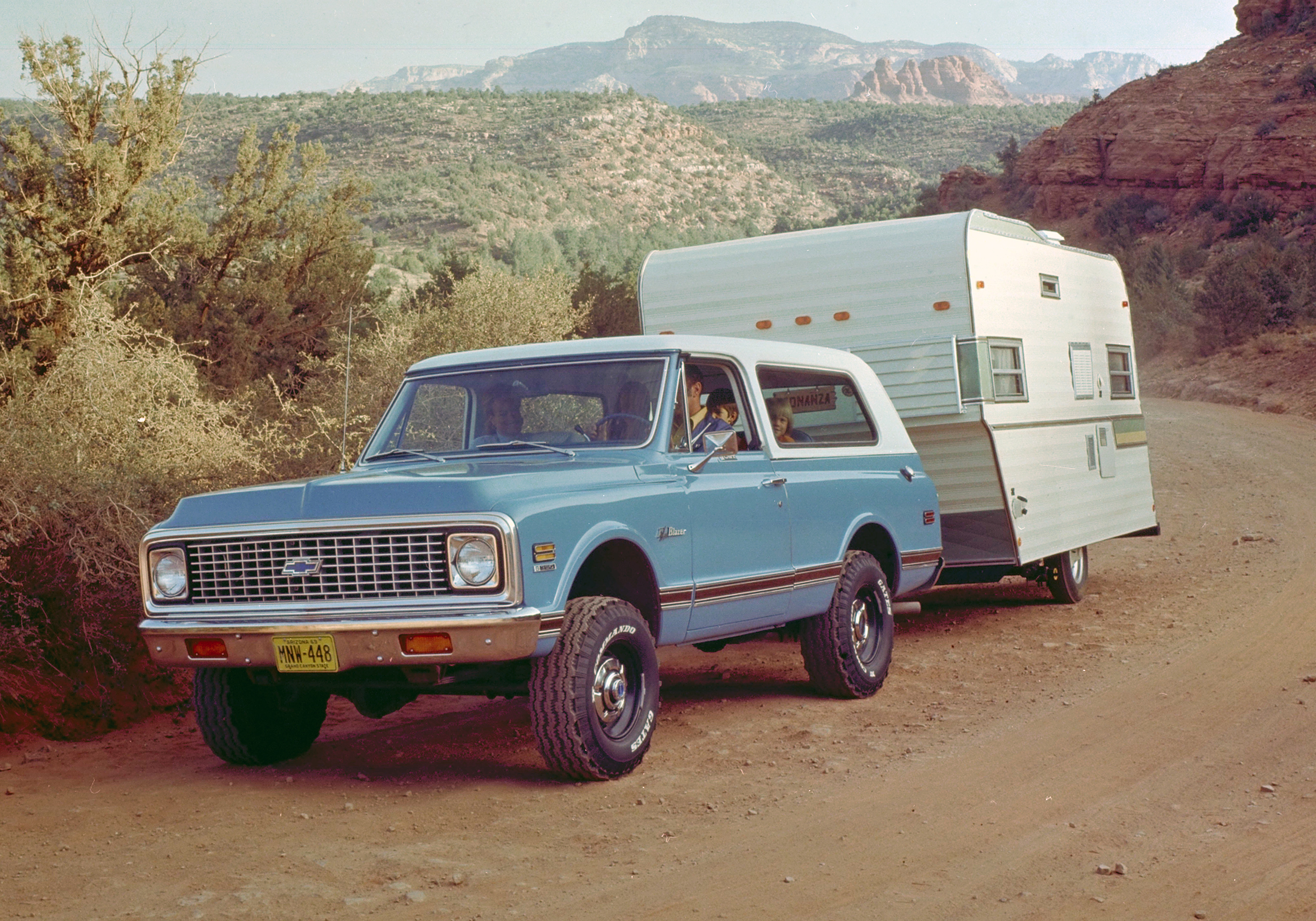Classic Truck History Part 8: Chevrolet 1950-1960's
Posted by Jil McIntosh on Aug 14th 2020
Chevrolet 1950s-1960s
Like other automakers, Chevrolet shut down civilian vehicle production during the Second World War, fulfilling government contracts for war materials. Soon after restarting, the company introduced its new “Advanced Design” pickup for 1947. As the calendar clicked into 1950, Chevrolet offered pickups from a half- to one-ton, a sedan delivery, panel van, and its Suburban Carryall eight-passenger wagon.
There was a new grille and styling tweaks for 1954, but that was just a warmup for 1955. The trucks got new “Task Force” styling, with a flatter hood, integrated front fenders, and wraparound windshield. The big news was the new 265 small-block engine, and it could be ordered in a pickup as well as in a car.

But as cool as the conventional trucks were, nothing could touch the new-for-1955 Cameo Carrier. This fancy half-ton featured the industry’s first Fleetside, with smooth sides and straight fenders – actually a conventional steel Stepside box, but with fiberglass panels. The trim was chrome, the wheel covers were off a Bel Air, the rear pillars and bed were painted red, and the rear window was wraparound. It was gorgeous but it was $1,981, while a regular half-ton was $1,519. Chevrolet sold 5,220 of them that year.

In 1958, the conventional light trucks were renamed Apache, and a Fleetside was offered – a real full-width steel bed, unlike the Cameo’s fiberglass skin.
There was a totally new kind of truck, of sorts, the following year. In 1957, Ford had lopped the rear roof off a station wagon to create the Ranchero, so Chevrolet took its freshly-restyled wagon and turned it into the 1959 El Camino, advertised as “More than a car, more than a truck.” More than 22,000 were sold the first year, but sales dropped the second year, and there wasn’t one for 1961. It returned for 1964, based on the midsize Chevelle. Ultimately, the El Camino would carry through until 1987, outlasting the Ranchero.

In 1960, Chevrolet introduced the rear-engine, air-cooled Corvair, and the following year brought out the commercial Corvair 95. Meant to compete with Volkswagen’s van, it came as a passenger van, panel truck, or pickup. The Loadside pickup had a traditional rear liftgate, while the Rampside added a box-side gate lowered to become a ramp. The Corvair car underwent a redesign for 1965 and stayed until 1969, but the 1964 vans and pickup were the last of their line.

Equally big news for 1960 was Chevy’s new C/K full-size pickups, with C indicating 4x2, and K for 4x4. The trucks were now styled with pod intakes in the hood, wider grille, and pinched-in beltline waist. Most notably, they had the industry’s first independent truck front suspension – Ford’s “Twin I Beam” didn’t arrive until 1965 – plus a drop-center frame, so the cab sat lower.

Up until now, trucks were for work, but increasingly, buyers wanted a bit more luxury. So when the C/K lineup was revamped for 1967 into a new smooth and handsome style, it also had standard seat belts, padded dash, padded sun visors, and a Custom Sport Truck model with chrome trim, bucket seats, and a center console. The Suburban Carryall also got the new look, and passenger models had one door on the driver’s side, two on the right.

The next big pickup overhaul would come in 1973, but Chevy had one more trick up its sleeve to round out the decade. Ford was doing well with its Bronco, and so Chevrolet countered with the new-for-1969 Blazer. Based on the K-10 half-ton, it rode on a 104-inch wheelbase, came with six-cylinder or V8, was exclusively 4x4 (a two-wheel arrived the following year), had a removable roof, and started at $2,852.

Car buyers hadn’t been ready to switch to trucks when the 1955 Cameo came out, but by the end of the 1960s consumers were in tune, and trucks were ready to make their mark on the market.
Here are some other interesting tidbits about Chevy’s trucks…
- There were actually two truck series for 1955. An all-new lineup was meant to debut alongside Chevrolet’s all-new cars, but it was just too much to do all at once. The early trucks, now known as “First Series,” used the six-cylinder engines from the 1954 models. The all-new “Second Series” trucks offered all the new goodies and V8 engines.
- The pricey Cameo’s best sales year was its first, and didn’t do well enough after that to warrant the extra work that went into making them unique from other trucks. In 1958, its last year, it was basically an Apache Fleetside with fancier trim.
- Chevrolet called the Corvair trucks and vans “forward control,” meaning the driver sat above or in front of the front axle, since the engine was at the rear.
- The 1967 4x4 trucks were the first built entirely in-house by Chevrolet. Prior to those, GM offered four-wheel systems built by NAPCO, the Northwestern Auto Parts Company, based in Minneapolis.
Chevy trucks from the 1950s were always popular, but the 1960s trucks are becoming increasingly coveted. It’s tough to find a Cameo or those first-generation El Caminos, but the C/K trucks are out there, albeit with rising prices for mint-quality ones. Drivelines were kept for many years, so it’s easy to get parts to keep them running, and body parts and trim are still plentiful, making these trucks prime candidates for restoration or hot-rodding.
Are you having trouble finding classic Chevy truck parts? If you are restoring an old Chevy truck, finding classic Chevy truck parts is easy. Collectors Auto Supply has thousands of Chevy truck restoration parts and automotive restoration supplies. Check out our home page to begin your search.
